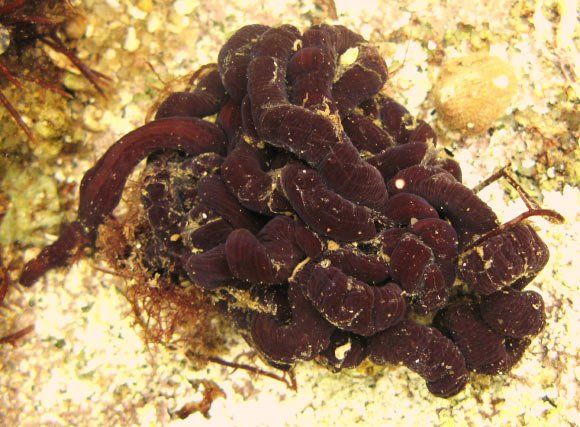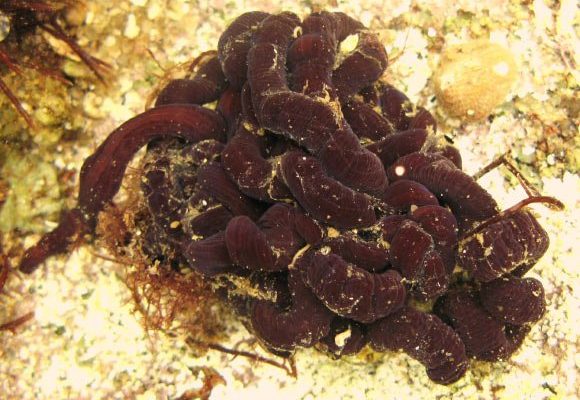
Bootlace worms, known scientifically as *Lineus longissimus*, can grow up to 50 meters long, making them one of the longest animals on Earth. They usually live in marine environments, hiding in the sediment or sometimes under rocks, waiting for their next meal. Their predation tactics are not only effective but also a great reminder of how diverse the food webs are beneath the waves. So, let’s dive deeper into this mesmerizing world and see how these worms go about their hunting adventures.
What Are Bootlace Worms?
Bootlace worms belong to the phylum Annelida, which means they’re segmented worms. These guys have a soft body covered in a slimy, protective layer, which helps them slip through tight spaces in the ocean floor. Think of them as the ocean’s version of a magician: they can camouflage and appear from nowhere!
While they might look like a pile of tangled strings, they are quite complex creatures. Bootlace worms have no bones and their bodies aren’t rigid like ours. Instead, they use a fluid-filled coelom to give them structure, allowing them to stretch and contract. This flexibility helps them navigate through their environment efficiently.
Their coloration can vary widely—some are bright and vividly colored, while others are more muted. This variety not only makes them interesting but also helps them blend in with the sea floor. This camouflage is a crucial aspect of their survival, especially since they are predators.
Diet of Bootlace Worms
So, what do bootlace worms eat? Well, their diet primarily consists of *crustaceans* and other small *invertebrates*. These can range from tiny shrimp to soft-bodied sea slugs. Imagine the bootlace worm as a stealthy hunter, waiting patiently for the perfect opportunity to catch its prey.
Bootlace worms use a fascinating predation technique. They extend their bodies and use their soft, sticky surfaces to trap unsuspecting creatures that wander too close. The worms can detect movement in the water, which cues them to strike.
In addition to crustaceans, bootlace worms might also munch on polychaete worms, mollusks, and even small fish when they can catch them. Their flexibility allows them to engulf prey much larger than themselves, making them quite effective predators in their watery homes.
Predation Techniques
One of the most intriguing things about bootlace worms is how they hunt. They don’t have teeth like a shark or speed like a jellyfish. Instead, they rely on stealth and patience. Imagine waiting for the perfect moment to catch a butterfly—bootlace worms do something similar under the water.
Bootlace worms can sense vibrations in the water, so when a crustacean scuttles by, they spring into action. Their bodies can extend and contract rapidly, allowing them to reach out and catch their prey. Once they have a hold, they can inject enzymes to break down the prey’s body, making it easier to digest.
Their hunting style is a great example of how different species have adapted to survive in their environments. It’s not just about brute strength; it’s about clever techniques and the ability to remain unseen.
Impact on Marine Ecosystems
You might be wondering, why does the predation of bootlace worms on crustaceans matter? Well, these worms play a vital role in maintaining the balance of marine ecosystems. By controlling the populations of their prey, they help ensure that no single species becomes too dominant.
This balancing act is crucial for promoting biodiversity. Healthy ecosystems with a variety of species can respond better to changes and stresses, such as pollution or climate change. Bootlace worms, as predators, contribute to this diversity by keeping invertebrate populations in check.
Moreover, when these worms and their prey die, they become part of the nutrient cycle. Their bodies decompose, returning essential nutrients to the ocean floor, which other organisms rely on to thrive. So, in a way, bootlace worms are part of the foundation that supports life in the ocean.
Threats to Bootlace Worms
Just like many marine organisms, bootlace worms face several threats. Pollution, climate change, and habitat destruction all contribute to their declining populations. These threats can disrupt their natural habitats, making it harder for them to find food and reproduce.
With rising ocean temperatures, the delicate balance of marine ecosystems can shift dramatically. For example, if crustacean populations decline due to pollution or overfishing, bootlace worms might struggle to find adequate food. This domino effect can cause problems for other species that rely on both bootlace worms and crustaceans.
It’s crucial for us to understand the challenges these worms face and work towards protecting their habitats. Only then can we ensure that the complex web of marine life continues to thrive for generations to come.
Conservation Efforts
Conservation efforts are vital to help protect bootlace worms and their ecosystems. Organizations and researchers are working together to monitor marine environments and establish protected areas where these unique creatures can thrive.
There are also community initiatives that encourage responsible fishing and reduce pollution. Simple actions, like reducing plastic use and maintaining healthy waterways, can significantly impact marine life.
In your everyday life, being aware of how your actions affect the ocean can make a difference. Supporting sustainable seafood choices and participating in local conservation efforts are great ways to get involved.
Conservation isn’t just about saving one species; it’s about maintaining the health of entire ecosystems. By working together and understanding the role bootlace worms play, we can help protect the wonders of the ocean.
Bootlace worms are truly fascinating creatures that play a vital role in marine ecosystems, especially through their predation on crustaceans and other invertebrates. Their unique hunting techniques, diet, and the impact they have on their environment remind us of the intricate connections that exist in nature.
By being aware of their challenges and supporting conservation efforts, we can ensure that bootlace worms continue to thrive beneath the waves. So next time you think about the ocean, remember this incredible worm and the important role it plays in maintaining the health of our blue planet. Your small actions can help preserve these underwater wonders—after all, every little bit counts!

